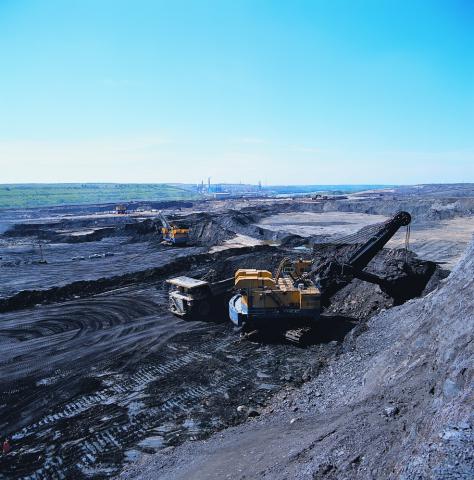The petro state of Alberta has outdone itself again. The Canadian province best known as home of the tar sands recently named former Syncrude executive Eric Newell to head up a multi-million provincial climate change fund. With no apparent irony, the province apparently felt that someone from the industry with the fastest growing emissions in Canada would be the best choice for this high profile job.
Newell now becomes president of the Climate Change and Emissions Management Corp, a provincial government scheme where companies that release more than 100,000 tonnes of CO2 per year are supposed to reduce their intensities by 12% or pay $15 per tonne above their target.
The program has been slagged by environmental groups since it seen to promote the widely panned concept of “intensity targets” rather than absolute carbon reductions. In the bizarre logic of intensity reductions, carbon emissions can and will go up as long as industries increase overall efficiencies. Imagine someone flapping their arms as they fall from a plane and you will get an idea of the efficacy of this policy.
In any case, the moneys raised by this scheme are so pitifully small they are neither much of an incentive to conserve, or a pool of capital to retool. Annual revenues are estimated to be $177 million or less than 0.1% of provincial GDP. The $15 per tonne penalty is also a joke compared to what is needed to provide disincentives to using the atmosphere as a virtually free dumping ground.
A report released this week by the Canadian Energy Research Institute (CERI) shows that carbon penalties need to be at least four times higher to provide meaningful market incentives to reduce carbon emissions.
CERI recommended carbon levies of at least $65 per tonne, which would add about $4 per barrel to already prohibitive production costs. No wonder that the tar sands boys would rather keep talking than deal with this problem.
The CERI report went much farther, stating that realistically, oil prices would have to be above $90 a barrel to bankroll the very expensive band-aids needed to control massive production emissions. And if construction costs climb as they did five years ago, oil prices will have to top $110 per barrel to make building these band-aids profitable.
Green of course is in the eye of the beholder. Believe it or not, nuclear reactors are towards the top of list to make the tar sands a greener venture. Nukes would help replace the massive amount of comparatively clean natural gas burned every day to pry the tarry bitumen from wet shale. The tar sands squander enough natural gas to heat 2.3 million Canadian homes every day.
Even if all these unlikely planets aligned, such production emissions are only one quarter of the so-called “downstream” emissions. Put another way, the only reason you would ever refine tar it into synthetic crude is so that it can be burnt in a car engine elsewhere in the world.
Unless drivers consent to dragging long hoses from their tailpipes, “carbon capture” technologies will never be able to deal with this often-ignored issue.
These downstream emissions dwarf even the colossal production emissions. There is enough extractable carbon in the tar sands to dump an incredible 122 billion tonnes of carbon into the atmosphere, no matter what shade of lipstick is applied to the pig at the production phase.
The bottom line is the tar sands will never be “green”. The already marginal economics forced most operators to pass on accessing billions in taxpayers dollars to build carbon capture pilot plants. Earlier this year, Shell abandoned plans to reduce emissions to those of conventional oil, even though this humiliating climb-down exposed them to litigation that threatens a $13.7 billion oil sands expansion project.
Even if the Alberta government grew a pair and quadrupled the carbon levy, oil prices would have to be at near historic levels to bankroll this industrial Potemkin Village. And if oil prices were again scraping the stratosphere, the incentives to shift away from the oil economy to renewables would become even more compelling.
The report from CERI is useful in that it outlines the fantasy market conditions that would have to exist, perhaps in an alternate universe, where the tar sands would be considered something other than an ecological catastrophe.
From an investor’s point of view, all of this is a huge red flag of risk for those thinking of throwing money at the Alberta oil “boom” now gone bust. The days of George Bush are receding rapidly in the rear view mirror. Credible carbon pricing is coming and the tar sands are poised to be a very big loser.
Subscribe to our newsletter
Stay up to date with DeSmog news and alerts






